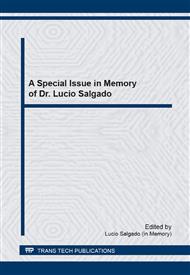p.429
p.435
p.442
p.448
p.454
p.460
p.466
p.475
p.480
An Innovative Approach to Mine Blast Fragmentation Management Using Complexity Analysis: Three Case Studies
Abstract:
This paper introduces an innovative solution for devising a robust blasting plan that will present consistently good fragmentation performance under highly uncertain environments. The analysis will be carried out using complexity analysis tools, a model-free approach to complex systems which is particularly well suited to the problem of finding non-deterministic dependencies between multiple variables. The study is backed-up by data from over 2,000 blast records from Brazilian mines and identifies what are the critical aspects of the system and how to manage the blasting plan to reduce their impact on its performance.
Info:
Periodical:
Pages:
454-459
Citation:
Online since:
September 2014
Price:
Сopyright:
© 2015 Trans Tech Publications Ltd. All Rights Reserved
Share:
Citation:


